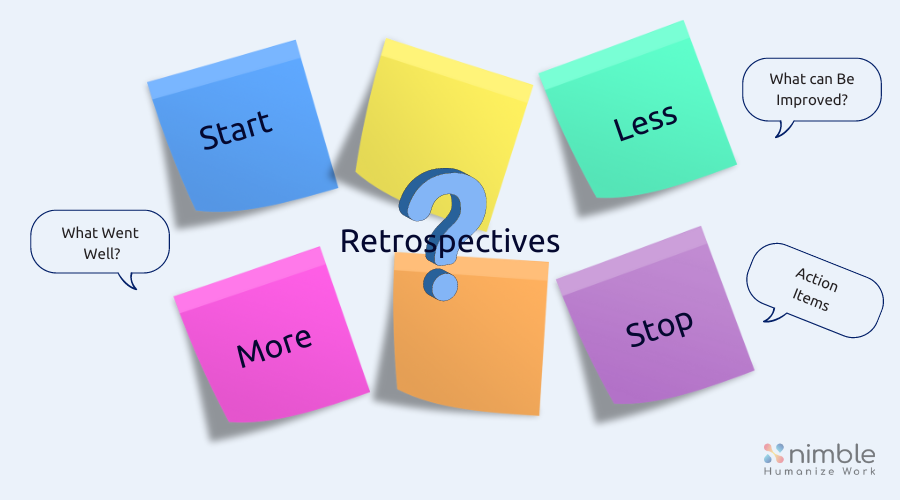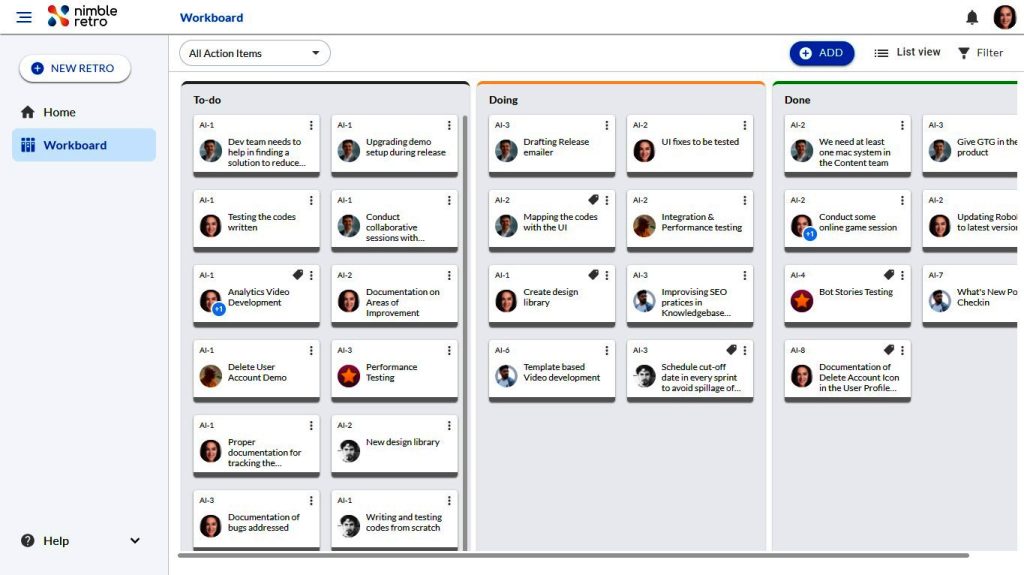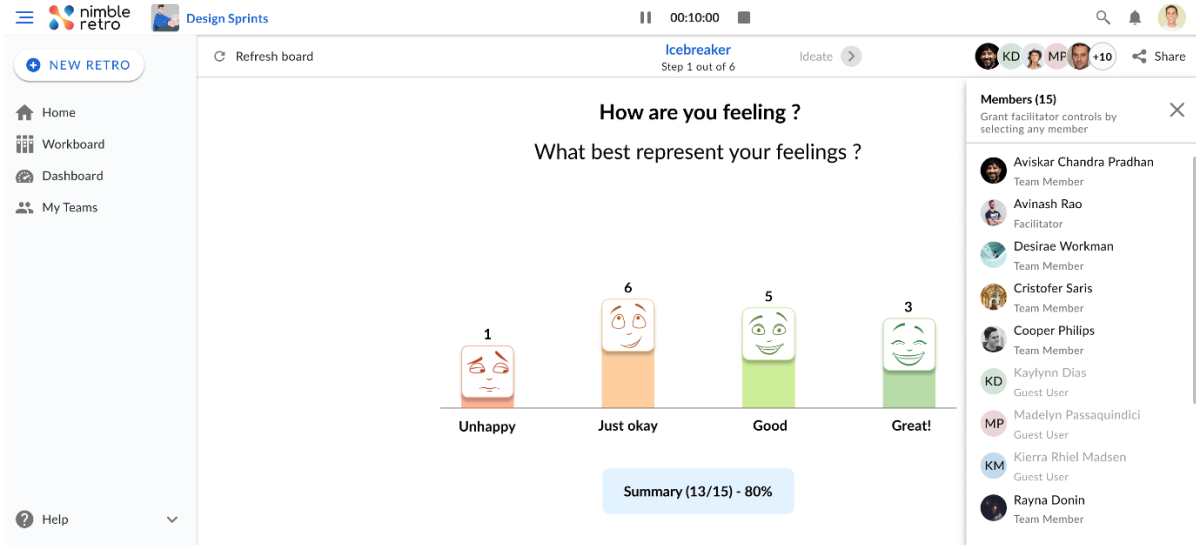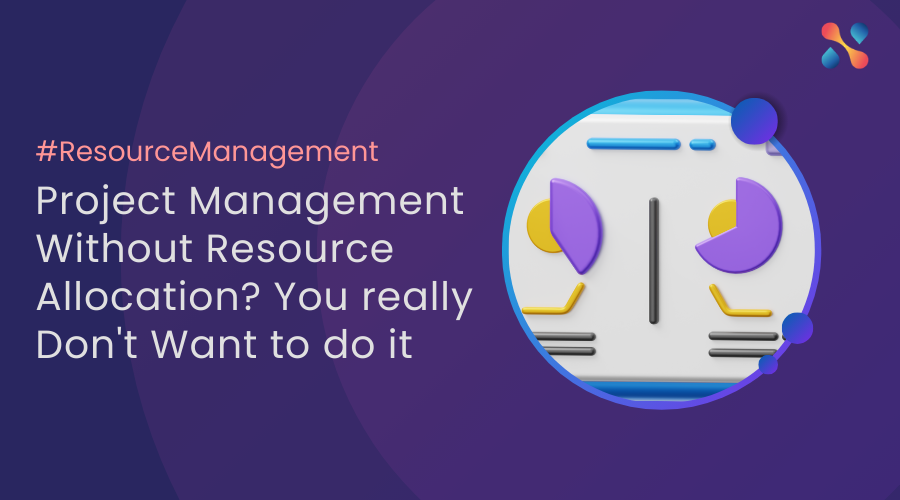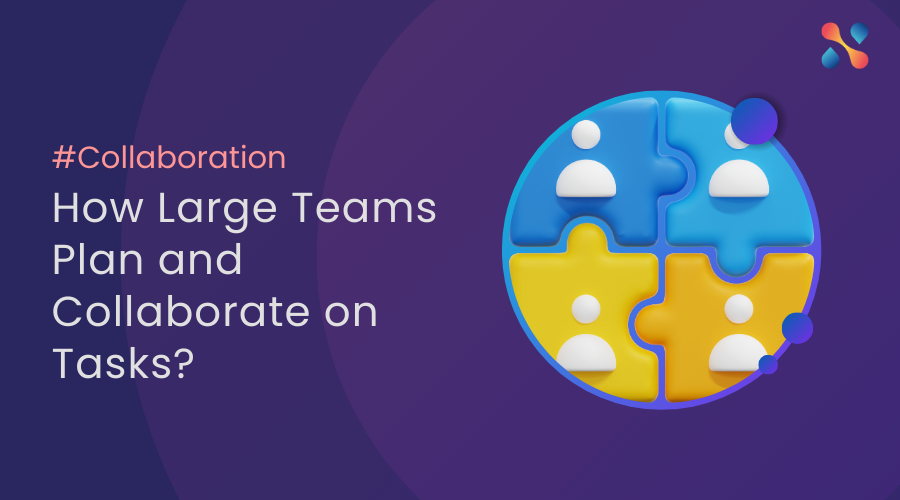We speak to a lot of project teams, and there’s one common thread that runs throughout those conversations: the pressure to do more without taking more time or resource.
Many teams lean into retrospectives to help uncover areas where processes could be slicker, where engagement hasn’t been as effective as it could and to look for areas of improvement.
Effective leaders focus just as much on what can be improved for next time as the deliverables themselves. A retrospective meeting is an opportunity for the team to reflect on what went well during the sprint (if we’re using Scrum terminology), what could have been done better and to discuss any actions that fall out of that discussion which would improve and iterate for next time.
The Place for Retrospectives
Retros happen regularly during the project management lifecycle for agile and iterative projects. You’ll find them at the end of an iteration, for the team to look back on that portion of the work. The output from the retro informs the next sprint.
You’ll also find them at the end of a project overall, where the team can reflect on the whole delivery, drawing insights from the complete journey and feeding actions and changes into the next project.
The Challenge of Retrospectives
Retros are so important for virtual teams. Without the stop-by-your-desk chat and the overheard conversations, it can be hard to keep up with who is doing what, and that’s before you start to build trust in a team by truly knowing your colleagues. Virtual teams can be a little more transactional!
The nature of working virtually means it’s harder to spot when things aren’t going so well. Those little grievances and grumbles can go unnoticed until they cause an explosion of conflict and send your project off the rails.
So we want to include agile retros in the general cadence of the project lifecycle for iterative projects, whether you meet in person or virtually – but that regular cadence brings its own challenges. How do you show up and give your honest feedback when retros can feel like a punctuation mark in the calendar, just something you do at the end of the sprint because it’s expected.
Retrospectives can become repetitive and formulaic because they happen so regularly, and this can dampen engagement, especially in a remote team. But they don’t have to be. Below, we’ll share some fun retrospective ideas to kickstart your thinking about how to keep your sessions interesting.
How to Run an Engaging Retrospective?
Avoid the repetitive, going-through-the-motions feeling of a retro by keeping your sessions as engaging as possible. Here are some tips to gather retrospective meeting points in a non-boring way.
Skip the Intros and Get Straight to the Activities
Most likely, everyone on the team will have worked together before. Skip the round table introductions and move straight into the retrospective questions. Of course, if you are joined by someone who is not known to the team, it’s polite to introduce them! But if you all know each other, drop the welcome and intros off your agenda unless there’s a really good reason to keep it.
Get Software Tools that Support the Retro Process
Make sure everyone has access to software tools designed specifically for retros. Yes, you can make a Kanban board in your standard project management software app, but tools designed for retros have built-in features for engagement which makes keeping the retrospective interesting and productive a whole lot easier.
Nimble Retro streamlines retrospective meetings, enabling teams to conduct efficient, insightful reviews of their work processes and outcomes. Nimble Retro has a mobile app so your remote team members can join the discussion even if they are traveling.
Many tools have templates built in so you can switch up the format of the retro. Common formats include:
• Stop, start, continue
• What, so what, now what
• Mad, sad, glad.
All of these are designed to elicit information about what worked, what didn’t and what improvements could be made for next time, as long as the team as a whole agrees that a change is worth trying.
Minimize the Meeting Admin
Retros can feel slow and clunky when someone is trying to facilitate and take notes at the same time. “Hang on a minute, I can’t type that fast,” or the awkward pauses as the facilitator catches up can be avoided if you have tools that work with you, not against you.
In-person retros tend to generate notes to type up afterward. You can avoid that and keep the pace of the meeting high if you use software, even if you are all in the same room. Tools that send actions straight to Jira mean that no one is distracted by the unnecessary admin coming later.
Use Voting
A really simple way to make the retro interesting is to use voting. Even the quietest members of the team can contribute easily, and even if the results don’t surprise you, it’s a fast, simple way to get people involved in the conversation.
Use Retrospective Games Carefully
Try out retrospective games but avoid bringing in fake fun for the sake of it. Listen to the team and use activities that they enjoy and find worthwhile and that also serve a purpose within the function of the retro, like the 5 Whys.
You can bring the fun by asking people to change their background or, have one odd item in the background for people to spot, or to wear a particular color – something easy and not time-consuming, so it doesn’t take focus or energy away from the job at hand.
With more and more retros taking place virtually, it’s really important to have the right tools and software in place to keep the meetings engaging and productive. When you can’t meet in person, use interactive online activities to keep momentum high and feedback coming in.
Nimble Retro simplifies retrospective meetings, providing teams with a structured platform to reflect on past projects and collaboratively identify areas for improvement. With its intuitive interface and customizable features, teams can efficiently conduct retrospectives and drive continuous growth. Take a free trial today to experience streamlined retrospectives firsthand!

